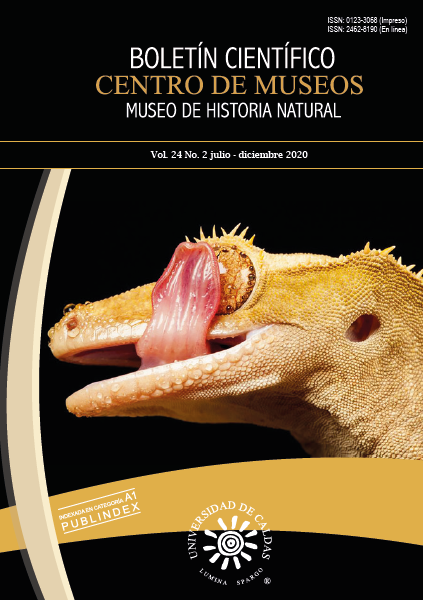Autores/as
Resumen
Evaluar el efecto letal y subletal de los acaricidas abamectina y dimetoato al depredador P. macropilis y su presa T. urticae. Alcance: Efecto letal y subletal de los acaricidas a P. macropilis y T. urticae. Metodología: Se determinó en experimentos de laboratorio el efecto letal y subletal de los acaricidas abamectina y dimetoato al depredador P. macropilis y su presa T. urticae. Principales resultados: T. urticae fue 2.6 veces y 4.2 veces más tolerante que P. macropilis a la abamectina y al dimetoato, respectivamente. La tasa instantánea de crecimiento poblacional de la presa y el depredador disminuyó linealmente con el aumento de las concentraciones de ambos acaricidas. Sin embargo, la tasa instantánea de crecimiento poblacional del depredador disminuyó más rápidamente que la de la plaga, lo que resultó en la extinción de las poblaciones del depredador, mientras que la población de plagas persistió. Conclusiones: Los agricultores pueden lograr un mejor control de la plaga no aplicando acaricidas, sino manejando las poblaciones de este depredador en el campo utilizando técnicas naturales de conservación del enemigo.
Palabras clave
Citas
Adesanya, A.W., Morales, M.A., Walsh, D.B. and Lavine, L.C. (2017). Mechanisms of resistance to three mite growth inhibitors of Tetranychus urticae in hops, Bulletin of entomological research, 108(1), 23-34. Doi: https://doi.org/10.1017/S0007485317000414
Casida, J.E. and Durkin, K.A. (2013). Neuroactive insecticides: targets, selectivity, resistance, and secondary effects. Annual review of entomology, 58, 99–117.Doi: https://doi.org/10.1146/annurev-ento-120811-153645
Chowdhurya, M.A.Z., Fakhruddin, A.N.M., Islam, M.N., Moniruzzaman, M., Gan, S.H. and Alam, M.K. (2013). Detection of the residues of nineteen pesticides in fresh vegetable samples using gas chromatography mass spectrometry. Food control, 34, 457-465.
Dekeyser, M. A., McDonald, P. T., Angle Jr, G. W., and Moore, R. C. (1996). D2341-A novel agent to control spider mites. In Brighton Crop Protection Conference: pests and diseases-1996: Volume 2: Proceedings of an international conference, Brighton, UK, 18-21 november 1996 (United Kingdom).
Fadini, M.A.M., Lemos, W.P, Pallini, A., Venzon, M. and Mourao, S.A. (2004). Herbivoria de Tetranychus urticae Koch (Acari: Tetranychidae) induz defesa direta em morangueiro? Neotropical
entomology, 33(3), 293-297.
Ferrero, M., Calvo, F.J., Atuahiva, T., Tixier, M.S. and Kreiter, S. (2011). Biological control of Tetranychus evansi Baker and Pritchard and Tetranychus urticae Koch by Phytoseiulus longipes Evans in tomato greenhouses in Spain [Acari: Tetranychidae, Phytoseiidae].Biological control, 58(1),30-35.
García-Marí, F. and González-Zamora, J.E. (1999). Biological control of Tetranychus urticae (Acari: Tetranychidae) with naturally occurring predators in strawberry plantings in Valencia, Spain. Experimental and applied acarology, 23(6), 487–495.
Gerson, U. and Weintraub, P.G. (2012). Mites (Acari) as a factor in greenhouse management. Annual review of entomology, 57, 229-247.
Hassan, S.A., Bigler, F., Bogenschütz, H., Boller, E., Brun, J., Calis, J.N.M, … & Helyer, N. (1994). Results of the sixth joint pesticide testing programme of the IOBC/WPRS-working group «pesticides and beneficial organisms». Entomophaga, 39(1), 107-119|.
Kamelmanesh, M.M., Hesami, S., Namayandeh, A., Ahmadi, B. and Dorri, H.R. (2010). Evaluation of resistance mechanism of some navy bean genotypes to two-spotted spider mite (Tetranychus urticae). Plant protection journal ,2(2), 111-125.
Kazak, C. (2008). The development, predation and reproduction of Phytoseiulus persimilis Athias-Henriot (Acari: Phytoseiidae) from Hatay fed Tetranychus cinnabarinus Boisduval (Acari: Tetranychidae) larvae and protonymphs at different temperatures. Turkish journal of zoology, 32(4), 407–414.
Kim, S.S. and Yoo, S.S. (2002). Comparative toxicity of some acaricides to the predatory mite, Phytoseiulus persimilis and the twospotted spider mite, Tetranychus urticae. BioControl,47(5): 563–573.
Krishna, R.A. and Bhaskar, H. (2016). Evaluation of selected acaro pathogenic fungi, botanicals and new acaricide molecules against Tetranychus urticae Koch (Prostigmata: Tetranychidae) on okra. Journal of tropical agriculture, 54(1), 1-21.
Mahmoud, S.S. and Croteau, R.B. (2002). Strategies for transgenic manipulation of monoterpene biosynthesis in plants. Trends in plant science, 7(8),366–373
McEwen, P. and Haskell, P.T. (Eds.). (2013). Ecotoxicology: pesticides and beneficial organisms. Dordrecht, Holanda: New Springer.
Mostafalou, S. and Abdollahi, M. (2012). Concerns of environmental persistence of pesticides and human chronic diseases. Clin. Exp. Pharmacol, 5, e002.
Oliveira, H., Janssen, A., Pallini, A., Venzon, M., Fadini, M. and Duarte, V. (2007). A phytoseiid predator from the tropics as potential biological control agent for the spider mite Tetranychus urticae Koch (Acari: Tetranychidae). Biological Control, 42(2), 105-109. Doi: https://doi.org/10.1016/j.biocontrol.2007.04.011
Rosario-Cruz, R., Almazán, C., Miller, R.J, Domínguez-García, D.I., Hernández-Ortiz, R. and de la Fuente, J. (2009). Genetic basis and impact of tick acaricide resistance. Frontiers in bioscience,14(7), 2657-2665.
SAS Institute Inc. (2004). The Princomp procedure. In SAS Institute Inc SAS/STAT(®). SAS Press,14 (1), 7435-7478.
Sato, M.E., da Silva, M.Z., da Silva, R.B., de Souza Filho, M.F. and Raga, A. (2009). Monitoramento da resistência de Tetranychus urticae Koch (Acari: Tetranychidae) a abamectin e fenpyroximate em diversas culturas no Estado de São Paulo. Arquivos do instituto biológico 76(2): 217–223.
Simmonds, S.P. (1971). Observations on the possible control of Tetranychus urticae on strawberries by Phytoseiulus persimilis. Plant Pathology, 20(3), 117-119. Doi: ttps://doi.org/10.1111/j.1365-3059.1971.tb00526.xStumpf, N. and Nauen, R. (2001). Cross-resistance, inheritance and biochemistry of mitochondrial electron transport inhibitor-acaricide resistance in Tetranychus urticae (Acari: Tetranychidae). Journal of Economic Entomology, 94(6), 1577-1583. Doi: 10.1603/0022-0493-94.6.1577
Van Leeuwen, T., Vontas, J., Tsagkarakou, A., Dermauw, W. and Tirry, L. (2010). Acaricide resistance mechanisms in the two-spotted spider mite Tetranychus urticae and other important Acari: a review. Insect biochemistry and molecular Biology, 40(8), 563–572. Doi: https://doi.org/10.1016/j.ibmb.2010.05.008
Waite, G.K. (1988). Integrated control of Tetranychus urticae in strawberry in south-east Queensland. Experimental and Applied Acarology,5, 23-32. Doi: https://doi.org/10.1007/BF02053814

 pdf
pdf
 FLIP
FLIP
























